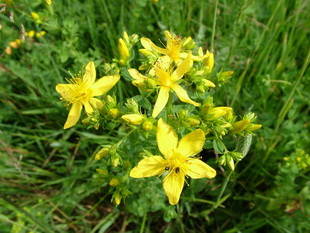
Profile
- Latin name: Hypericum perforatum
- CAS No .: 84082-80-4
- Specifications: 0.2-0.3% Hypericin or with D: E = 4: 1 & 20: 1
- Used part: flowering tops
- Test Method: HPLC
Description
It is part of traditional medicine due to its phytotherapeutic properties, in particular the antidepressant and antiviral ones. The origins of its use as a medicinal herb are very ancient and traces of it can be found in the writings of many centuries ago.
It is a semi-evergreen perennial plant, with an erect stem crossed by two longitudinal strips in relief. It is well recognizable even when it is not in bloom because its leaves against the light appear “pitted”: they are actually small oily vesicles from which the name perforatum derives; at the edges are visible black points, glandular structures containing hypericin (a red oil), these glandular structures are present mainly in the petals. The leaves are oblong opposite. The golden yellow flowers have 5 delicate petals and are gathered in corymbs.
In traditional herbal medicine, on the other hand, the astringent, anti-inflammatory and antibacterial qualities of hypericum have been mainly enhanced, also for internal use but especially for external use in the treatment of burns, hemorrhoids, wounds, sores.

